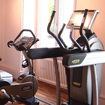Things people can or can't do
Elementary level, SB PP.44-45 level
Description
Materials
Main Aims
-
To practise 'can' postive, negative, and question forms in the context of ability.
Subsidiary Aims
-
To revise collocations that describe abilities and practise listening for specific information
Procedure (33-46 minutes)
To show pictures of celebrities and fully engage the students in the lesson. Students will be asked to come to the board and guess the words to complete the sentences.
To ask students to look at pictures pp 44-45 and work in pairs to match the picture with the sentence/ activity To present the grammar spot in an interactive way and write can/can't + bare verb on the board students will take turns in asking each other what they can or can't do
To clarify the pronunciation of can/ can't as it is pronounced differently in positive, negative, and question. Cards of three different sounds are to be handed to the students. Students have to show the card that they think contains the sound pronounced. The teacher will elicit the use of the strong and weak form.
The teacher will ask students to listen and complete the sentences with can or can't + verb. The teacher will tell the students to listen to the first recording, complete the sentence. Each student will, the, check his/her answer with their elbow person. The teacher will practice some back-chaining with the first example. Students will be given five minutes to listen to the rest of the recording and complete the sentences individually. Answer key sheets will be placed on the door/wall for the students to check their answers.
To revise collocations that describe abilities. Drilling will help students identify the collocations and practice them. The students will be handed a chart and asked to listen to a recording about what Lucia can and can't do. The teacher and the students will do the first example together. The students are to tick the activities that Lucia can do and put and (x) in front of the activities that she can't do. Students will do the same when completing the chart about themselves. Now, the teacher will engage students in a pair-work activity where they have to take turns in asking each other the questions in the chart and filling it. The teacher will give an example of how a student can tell the whole class about oneself and his/her partner. (Example: Louis can ski, but I can't) Then, the students will be asked to produce similar sentences.
Teacher writes 2050 on the board to engage students' brains and asks them to imagine what can computers do in 2050. Teacher asks students if computers will be able to laugh in 2050 as an example. Students engage in pair discussions asking questions and attempting yes/ no short answers.

